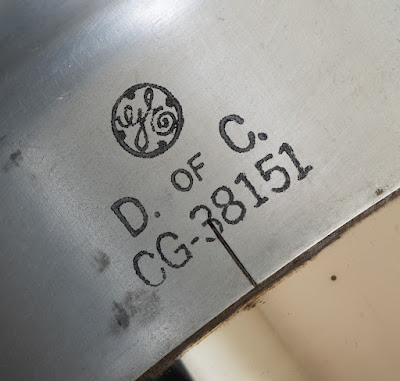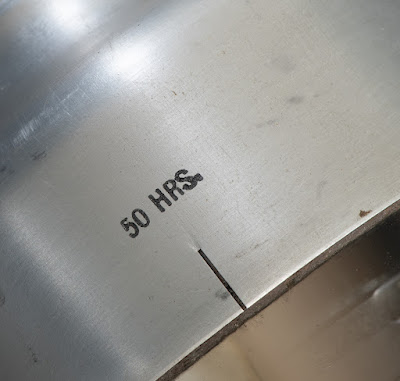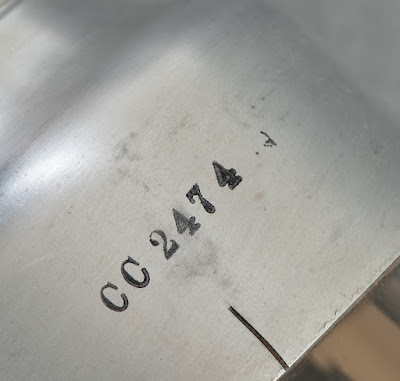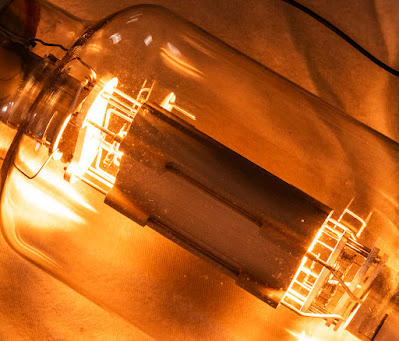Hi!
Since the tube of the month series comes to an end soon, I picked a special tube for this months presentation. I'd like to show the biggest tube type in my collection. Meet the almighty 851.
The 851 is one of the largest air cooled transmitting triodes with its gargantuan bulb diameter of about 15cm and overall height of more than 40cm.
With a maximum plate dissipation of 600W (!) it is capable to deliver 160W output power in a single ended Class A1 circuit and a whopping 2400W in Class B push pull. For this it needs to be operated at up to 3kV plate voltage and a quarter of an Ampere plate current. The filament requirements are equally hefty with 11V at 15.5A. The amplification factor is a bit over 20 and the plate resistance comes in at 1.6kOhm. Due to the rather high amplification factor the grid voltage swing needed to drive the tube to full power in single ended operation is less than 200V peak to peak. About as much as that of the 300B. I would see a 211 as the perfect driver tube for the 851. Connection to the tube happens from both sides through a large plate cap at one end and two thick filament pins on the other. The grid is connected through a blade which is located between the filament pins. The connection is the same as with the 849 the little sister of the 851. For a complete set of technical parameters see the General Electric data sheet. Obviously creating an amplifier with this tube would be a daunting task. When I first saw a 851, I had to have some and I contemplated building an amp for it. Initial planning resulted in at least 3 chassis per channel, one for the high voltage supply, a filament supply chassis and the actual amp. Still each chassis would be quite big and heavy. Who knows maybe one day I will work on such a beast.The plate curves from the data sheet above and the plate curves taken with the curve tracer. Due to limited voltage range of the tracer only up to 400V and with grid voltage steps of 2V:
And now some series toob porn:
Here we have a General Electric 851 in all its glory.
What a massive slab of graphite as plate!
Close up of the filament tension springs:
Two of my 851s:
I also have two sets of suitable sockets:











































































Thank you for posting all this information! I have enjoyed reading the articles and viewing all the great photos. I sure would like to see you build the 851 amp. I have a half dozen 849s and some distorted thoughts about building an amp with those.
ReplyDeleteThat grid glow is gorgeous when plugged in!
ReplyDelete